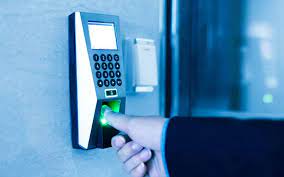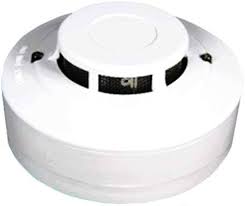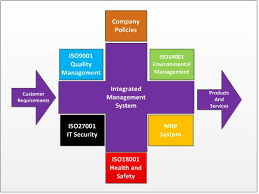Access control systems are an essential component of modern security systems. They allow organizations to manage access to their premises or specific areas within the premises, ensuring that only authorized personnel can enter. Access control systems come in various forms and can be tailored to meet the specific needs of different organizations.
One of the most common types of access control is the card reader system. This system uses a card or key fob containing a unique code that is read by a reader at the entrance. The code is then checked against a database to determine whether the individual has permission to enter. If they do, the door will unlock, and they can enter. If not, access will be denied.
Biometric access control systems are also becoming increasingly popular. These systems use unique physical characteristics such as fingerprints or facial recognition to identify individuals and grant them access. Biometric systems are highly secure because they cannot be easily duplicated or stolen.
Access control systems offer several benefits for organizations. Firstly, they help prevent unauthorized access, which can reduce theft and vandalism. Secondly, they provide an audit trail of who accessed specific areas and when, which can be useful for investigations or compliance purposes.
Access control systems also offer flexibility in managing access permissions. For example, certain employees may only need access during specific hours or days of the week. Access control systems can be set up to accommodate these requirements easily.
Another advantage of access control systems is that they can integrate with other security technologies such as CCTV cameras and alarm systems. This integration allows for a more comprehensive security solution that provides real-time monitoring and alerts.
In conclusion, access control systems are an essential part of modern security solutions for organizations of all sizes. They offer several benefits such as preventing unauthorized access, providing an audit trail, offering flexibility in managing permissions and integrating with other security technologies. Organizations should carefully consider their needs when selecting an access control system to ensure they get the most out of this critical security technology.
6 Benefits of Access Control Systems: Enhanced Security, Increased Efficiency, Improved Visibility, Cost Savings, Flexibility, and Scalability
- Enhanced Security – An access control system helps to protect your property by limiting who can enter and exit the premises. It also provides a record of who has entered and left, which can be used for security purposes.
- Increased Efficiency – Access control systems are designed to streamline the process of entering and exiting a building, which saves time and energy for staff members who would otherwise need to manually unlock doors or check people in/out.
- Improved Visibility – With an access control system, you have visibility into who is coming and going from your property at all times, allowing you to better manage traffic flow on the premises.
- Cost Savings – Installing an access control system can reduce costs associated with hiring additional security personnel or purchasing traditional locks for each door on the premises.
- Flexibility – Access control systems offer flexibility by allowing you to set different levels of authorization for different users based on their needs and responsibilities within the organization.
- Scalability – As your business grows or changes over time, an access control system is easily scalable so that it can accommodate new users as needed without any major reconfiguration efforts required
Challenges of Access Control Systems: Cost, Technical Issues, User Training, and False Positives/Negatives
Enhanced Security – An access control system helps to protect your property by limiting who can enter and exit the premises. It also provides a record of who has entered and left, which can be used for security purposes.
Enhanced security is one of the most significant benefits of access control systems. By limiting who can enter and exit the premises, an access control system helps protect the property and assets within it. It also provides a record of who has entered and left, which can be used for security purposes.
Access control systems use various methods to limit entry, including key cards, biometric data, and PIN codes. These methods ensure that only authorized individuals can gain access to the property or specific areas within it. This feature is particularly useful in high-security buildings such as government institutions, banks, and data centers.
In addition to limiting entry, access control systems provide a record of who has entered and left the premises. This information can be used for security purposes such as investigating theft or vandalism. The system can also generate reports on who has accessed specific areas within the premises at different times.
Furthermore, access control systems can be integrated with other security technologies such as CCTV cameras and alarm systems. This integration allows for real-time monitoring and alerts if unauthorized access is attempted.
Overall, enhanced security is a significant benefit of access control systems. By limiting entry to authorized individuals only and providing a record of who has entered and left the premises, these systems help protect property and assets while providing peace of mind to building owners and occupants alike.
Increased Efficiency – Access control systems are designed to streamline the process of entering and exiting a building, which saves time and energy for staff members who would otherwise need to manually unlock doors or check people in/out.
Access control systems are becoming increasingly popular among organizations due to the many benefits they offer. One of the most significant advantages of access control systems is increased efficiency. These systems are designed to streamline the process of entering and exiting a building, saving time and energy for staff members who would otherwise need to manually unlock doors or check people in/out.
With access control systems, employees can quickly enter and exit the building using their card or biometric credentials, without requiring assistance from security personnel. This not only saves time but also reduces the risk of errors or delays that can occur when relying on manual processes.
Moreover, access control systems can be integrated with other technologies such as CCTV cameras and alarm systems, which further enhances efficiency. For example, if an unauthorized person attempts to enter a restricted area, an alarm will be triggered immediately, and security personnel can take action promptly.
In addition to improving efficiency, access control systems also enhance security by preventing unauthorized entry into restricted areas. This helps protect valuable assets such as equipment, data centers, and confidential information.
In conclusion, access control systems offer several benefits for organizations looking to improve their security and efficiency. By streamlining the process of entering and exiting buildings, these systems save time and energy for staff members while also enhancing overall security. Organizations should consider implementing an access control system to enjoy these benefits while also ensuring their premises remain secure at all times.
Improved Visibility – With an access control system, you have visibility into who is coming and going from your property at all times, allowing you to better manage traffic flow on the premises.
An access control system is a valuable tool for managing the flow of people and vehicles on your property. One of the key benefits of an access control system is improved visibility. With an access control system in place, you can monitor who is coming and going at all times. This visibility allows you to better manage traffic flow on the premises, ensuring that only authorized individuals are granted access.
Improved visibility also means that you can quickly identify any unauthorized access attempts or security breaches. If someone tries to enter the property without permission, the access control system will alert you immediately, allowing you to take appropriate action.
In addition to improving security, improved visibility can also help with operational efficiency. By tracking who is entering and leaving the property, you can identify peak traffic times and adjust staffing levels accordingly. This can help reduce wait times and improve overall customer satisfaction.
Overall, an access control system offers many benefits for businesses and organizations. Improved visibility is just one of these benefits, but it is a crucial one that can help improve security and operational efficiency. If you are considering implementing an access control system on your property, be sure to choose a solution that meets your specific needs and requirements.
Cost Savings – Installing an access control system can reduce costs associated with hiring additional security personnel or purchasing traditional locks for each door on the premises.
One of the significant advantages of an access control system is the cost savings it offers. Traditional security measures such as hiring additional security personnel or purchasing locks for each door on the premises can be costly. However, with an access control system, these costs can be significantly reduced.
Access control systems allow organizations to monitor and manage access to their premises without the need for additional security personnel. The system can be programmed to restrict access to specific areas based on employee roles or working hours. This means that only authorized personnel can enter certain areas, reducing the need for additional security personnel.
Moreover, traditional locks require frequent maintenance and replacement, which adds to the overall cost. With an access control system, there is no need for physical keys or locks, reducing maintenance and replacement costs.
In addition to cost savings on personnel and maintenance, access control systems also offer long-term savings by preventing theft and vandalism. Unauthorized individuals are less likely to gain entry into restricted areas with an access control system in place, reducing the risk of theft or damage to property.
Overall, installing an access control system can provide significant cost savings by reducing the need for additional security personnel and traditional locks while also preventing theft and vandalism. Organizations should consider implementing this technology as part of their overall security strategy to enjoy these benefits and improve their bottom line.
Flexibility – Access control systems offer flexibility by allowing you to set different levels of authorization for different users based on their needs and responsibilities within the organization.
Access control systems offer a significant advantage of flexibility, which allows organizations to set different levels of authorization for different users based on their needs and responsibilities within the organization. This means that not every employee will have the same access level, and only authorized personnel can enter specific areas within the premises.
Flexibility is essential in managing access permissions because it allows organizations to customize their security solutions to meet their unique needs. For example, employees who work in sensitive areas such as data centers or research labs may require higher levels of access control than those who work in administrative offices. Access control systems can be set up to accommodate these requirements easily.
Another benefit of flexibility is that it allows organizations to manage access permissions based on time and location. For example, certain employees may only need access during specific hours or days of the week, while others may require 24/7 access. Access control systems can be programmed to accommodate these requirements quickly.
Flexibility also makes it easier for organizations to respond quickly to changing security needs. For example, if an employee is promoted or transferred to a new department, their access level can be adjusted accordingly without having to issue new cards or keys.
In conclusion, flexibility is a crucial advantage of access control systems because it allows organizations to customize their security solutions based on their unique needs. With this feature, they can manage different levels of authorization for different users based on their responsibilities and requirements within the organization. This makes it easier to manage access permissions based on time and location and respond quickly to changing security needs without compromising overall safety and security.
Scalability – As your business grows or changes over time, an access control system is easily scalable so that it can accommodate new users as needed without any major reconfiguration efforts required
One of the significant advantages of access control systems is their scalability. As businesses grow and change, their security needs may also evolve. An access control system can easily accommodate these changes without requiring significant reconfiguration efforts.
Scalability means that organizations can add new users to the system as needed without having to replace the entire system or make major changes. This flexibility is critical for businesses that are expanding or changing rapidly, as it allows them to keep up with their security needs without disrupting their operations.
For example, suppose a company adds a new department or hires additional employees. In that case, they can simply add new users to the access control system and assign them appropriate permissions without having to reconfigure the entire system. This process is quick and straightforward, allowing businesses to keep pace with their growth and changing security needs.
Scalability also means that access control systems can be customized to fit specific business requirements. Organizations can choose from a range of solutions, from simple standalone systems to complex enterprise-level solutions that integrate with other security technologies.
In conclusion, scalability is a significant advantage of access control systems. It allows organizations to add new users as needed without requiring major reconfiguration efforts and ensures that the system can grow and change with the business’s evolving security needs. As such, it is an essential consideration for any organization looking for a reliable and flexible security solution.
Cost
While access control systems offer several benefits, one of the significant drawbacks is their cost. These systems can be expensive to install and maintain, making them unaffordable for small businesses or organizations with limited budgets. The cost of an access control system depends on several factors such as the type of system, the number of doors or areas to be secured, and the level of security required.
For small businesses or organizations with a limited budget, the cost of an access control system can be a significant barrier to implementing this technology. The installation and maintenance costs can quickly add up, making it difficult for these organizations to justify the expense.
However, it’s essential to note that while access control systems may seem expensive upfront, they offer long-term cost savings by preventing theft and vandalism and reducing the need for security personnel. Additionally, some access control systems are more affordable than others, such as card reader systems that use existing infrastructure like CCTV cameras.
Organizations should carefully consider their needs and budget when selecting an access control system. They should also explore options such as leasing or financing to make these systems more affordable. While the cost of an access control system may be a disadvantage for some organizations, it’s essential not to overlook the long-term benefits that this technology can provide in terms of security and peace of mind.
Technical Issues
While access control systems offer many benefits, they are not without their drawbacks. One significant disadvantage of these systems is their susceptibility to technical issues. Access control systems rely on technology, and any technical issue can cause downtime and disrupt the organization’s operations.
Software glitches are one of the most common technical issues that access control systems face. These glitches can cause the system to malfunction, leading to access denials or unauthorized access. Hardware malfunctions such as faulty readers or wiring can also cause issues with the system’s operation.
Connectivity problems are another common issue with access control systems. If the system is not connected to a stable network, it may not function correctly, leading to downtime and security breaches.
Resolving technical issues with access control systems requires specialized technicians who understand the system’s intricacies. This can lead to additional costs for organizations that need to hire these technicians or outsource their services.
To mitigate these technical issues, organizations should ensure that their access control systems are regularly maintained and updated by qualified technicians. They should also have backup plans in place in case of downtime, such as manual entry procedures or secondary authentication methods.
In conclusion, while access control systems offer many benefits for organizations’ security needs, they are susceptible to technical issues such as software glitches, hardware malfunctions, and connectivity problems. To minimize these issues’ impact on operations and security, organizations should take proactive measures such as regular maintenance and having backup plans in place.
User Training
While access control systems offer many benefits, there are also some potential drawbacks to consider. One significant disadvantage is the need for user training. Access control systems require users to be trained on how to use them correctly, which can be time-consuming and costly.
Training is essential because if users do not understand how to use the system correctly, it can result in security breaches. For example, if a user accidentally leaves a door unlocked or shares their access card with someone who shouldn’t have access, it can compromise the security of the entire system.
Training can also be costly, particularly in organizations with frequent staff turnovers or changes in access permissions. Each new employee will need to be trained on how to use the system correctly, which can add up over time.
However, these drawbacks should not deter organizations from implementing an access control system. The benefits of this technology far outweigh the potential challenges. With proper training and ongoing support, users can quickly learn how to use the system effectively and ensure that it remains secure.
Organizations should consider working with a reputable provider who offers comprehensive training and ongoing support for their access control systems. This will help ensure that all users understand how to use the system correctly and that any issues are promptly addressed.
In conclusion, while user training is a potential con of access control systems, it should not discourage organizations from implementing this critical security technology. With proper training and ongoing support, users can learn how to use the system effectively and maintain its security over time.
False Positives/Negatives
While access control systems offer several benefits, they are not without their drawbacks. One of the most significant cons of access control systems is the potential for false positives and false negatives.
False positives occur when the system allows unauthorized individuals access to a restricted area. This can happen due to various reasons such as a malfunctioning system, user error or environmental factors like lighting conditions that affect biometric identification accuracy. False positives can pose a significant security risk as they can compromise the integrity of the entire security system.
On the other hand, false negatives occur when authorized individuals are denied access to a restricted area. This can happen due to similar reasons as false positives and can be equally problematic. False negatives can cause frustration and inconvenience for authorized personnel, leading to decreased productivity and morale.
To minimize the risk of false positives and false negatives, organizations should ensure that their access control systems are properly installed and maintained. Regular testing and calibration of biometric readers can help improve accuracy and reduce errors. Additionally, organizations should provide proper training to employees on how to use the access control system correctly.
Overall, while false positives/negatives are a potential con of access control systems, they can be mitigated with proper installation, maintenance, and training. Organizations should carefully consider these factors when implementing an access control system to ensure maximum effectiveness in securing their premises.





Hurrah! After all I got a blog from where I can really obtain valuable data regarding my study
and knowledge.
Thank you for your comment! We are glad to hear that our blog article has provided you with valuable information about access control systems. We believe that having a good understanding of this critical security technology is essential for anyone who wants to ensure the safety and security of their premises and assets. If you have any questions or feedback, please feel free to share them with us.
Good day I am so grateful I found your web site, I really found you
by mistake, while I was browsing on Digg for something else, Anyhow I
am here now and would just like to say thanks for a tremendous post and a all round entertaining blog (I also love the theme/design), I don’t have time to look over it
all at the minute but I have bookmarked it and also
added your RSS feeds, so when I have time I will be back to read much more, Please do keep up the
superb b.
Thank you for your kind words! We’re glad that you stumbled upon our website and found our blog post on access control systems to be tremendous and entertaining. We appreciate your support and the fact that you have bookmarked our site and added our RSS feeds. We look forward to having you back to read more in the future. If you have any specific questions or topics you’d like us to cover, please let us know.